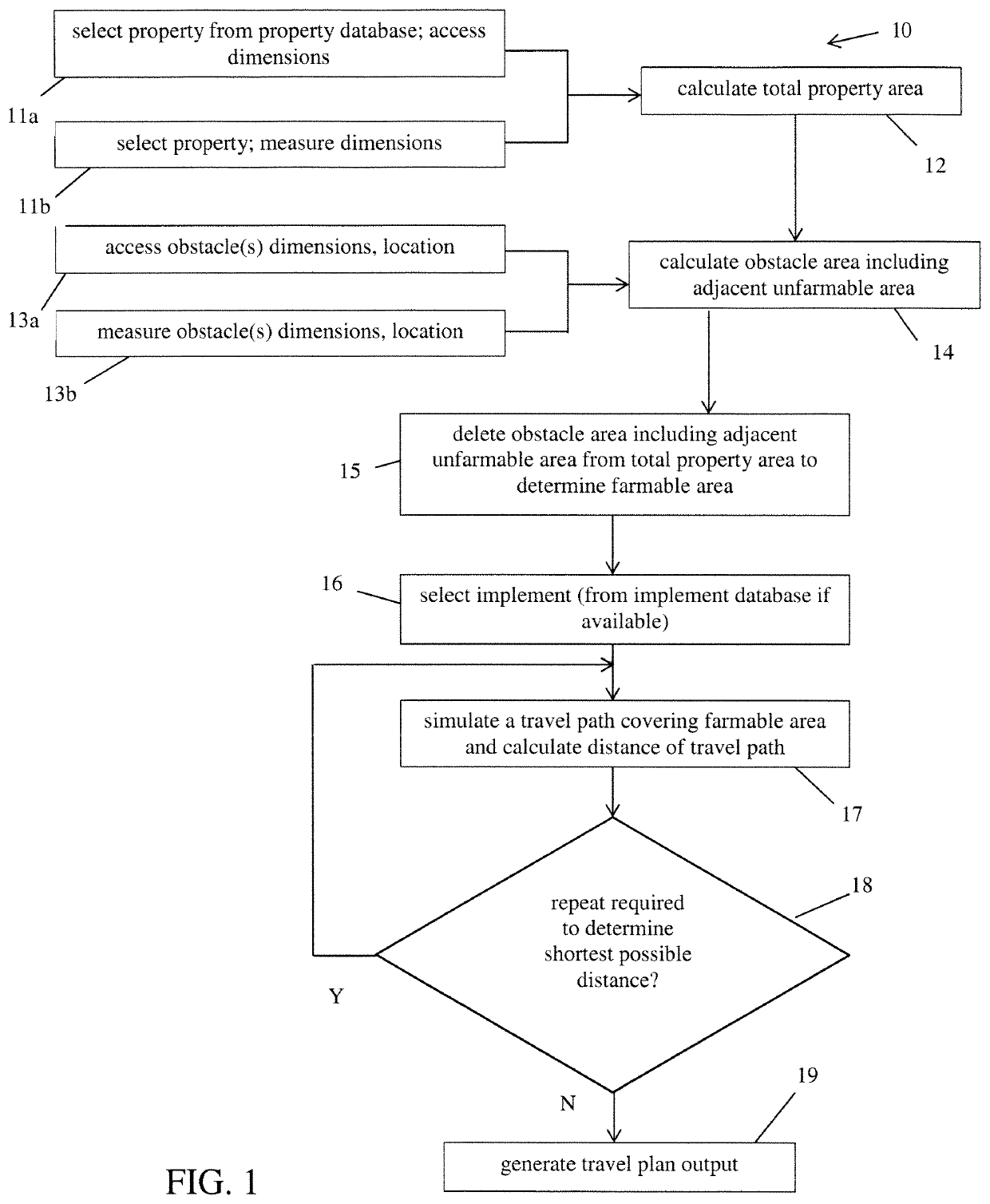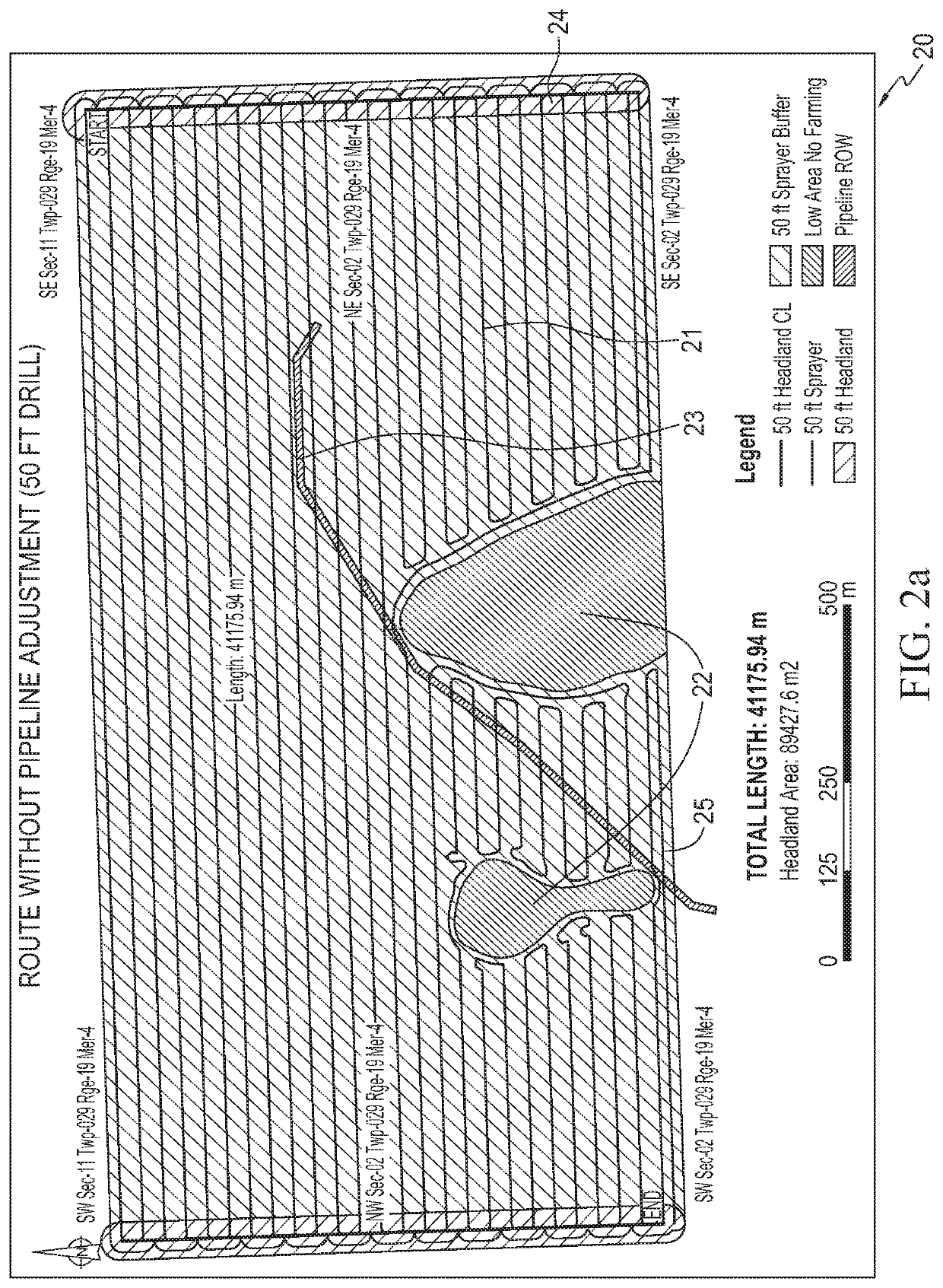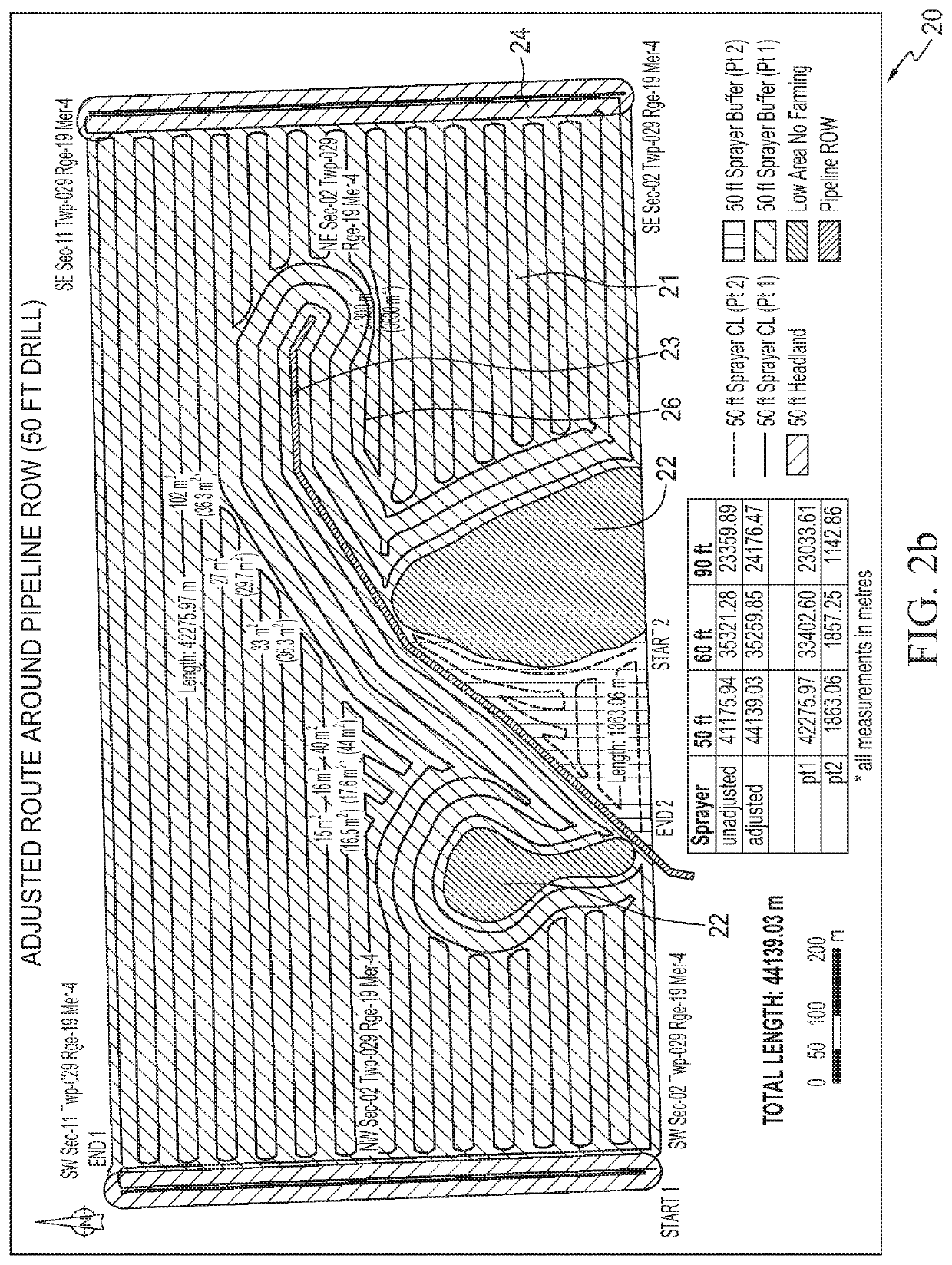Method and system for determining optimized travel path for agricultural implement on land with obstacle
a technology of agricultural implements and travel paths, applied in forecasting, data processing applications, instruments, etc., can solve problems such as inefficiency and potential waste of time and energy resources, negative impact on production activities, and difficulty in determining travel paths, so as to reduce inefficiencies
- Summary
- Abstract
- Description
- Claims
- Application Information
AI Technical Summary
Benefits of technology
Problems solved by technology
Method used
Image
Examples
Embodiment Construction
[0057]The present invention is directed to methods for identifying and addressing the impact on agricultural production of a physical obstacle—natural or man-made—that is located in a field. Reference is made to pre-disturbance and post-disturbance land areas, which respectively represent the farmable land before and after introduction of the obstacle. In the case of a man-made obstacle, the method may address a situation where the obstacle is already in place, or it may address a situation where the obstacle has yet to be positioned in the field. As stated above, a travel path may be selected as “optimized” based on various criteria and parameters, depending on what the operator has determined is the factor to be determinative in selecting between possible paths. One common feature of the exemplary methods described below is the determination of a post-disturbance farmable area, and how one can optimize production by analysis of that farmable area and determination of an implement ...
PUM
 Login to View More
Login to View More Abstract
Description
Claims
Application Information
 Login to View More
Login to View More - R&D
- Intellectual Property
- Life Sciences
- Materials
- Tech Scout
- Unparalleled Data Quality
- Higher Quality Content
- 60% Fewer Hallucinations
Browse by: Latest US Patents, China's latest patents, Technical Efficacy Thesaurus, Application Domain, Technology Topic, Popular Technical Reports.
© 2025 PatSnap. All rights reserved.Legal|Privacy policy|Modern Slavery Act Transparency Statement|Sitemap|About US| Contact US: help@patsnap.com



